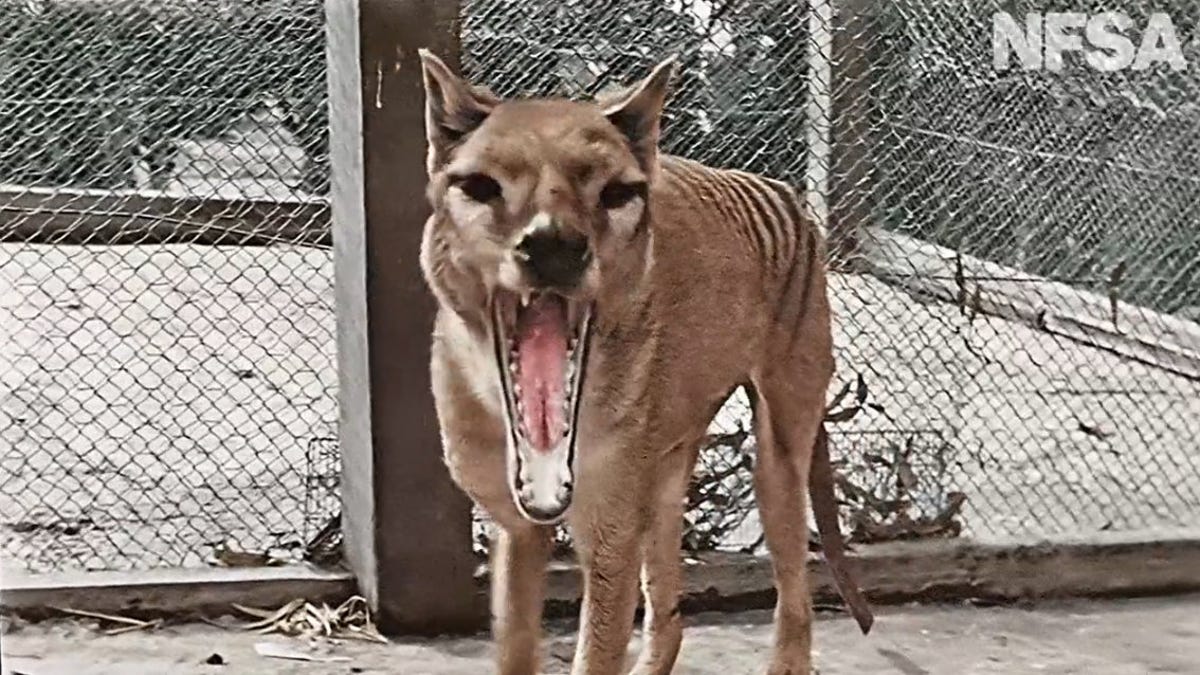Missing Remains of Last Tasmanian Tiger Finally Found, Hidden in Plain Sight
The thylacine died many decades ago in captivity, but its story will be told anew.

This screenshot from a colorized 1933 movie of Tasmanian tiger shows its long jaw.
The last known Tasmanian tiger died in a zoo in 1936. The thylacine's remains were misidentified for decades, but a team of researchers has rediscovered its bones and skin hidden in plain sight in a collection at the Tasmanian Museum and Art Gallery in Hobart.
This partial thylacine skull belongs to the last known Tasmanian tiger.
The extinct animals were carnivorous marsupials native to Australia. They looked like a cross between a dog and a cat with distinctive tiger-like stripes across their backs. The animals have maintained a hold on the popular imagination, with unconfirmed (and unlikely) sightings in the wild.
The last thylacine's story is a tangled one. It was an old female captured by trapper Elias Churchill. He then sold her to the Beaumaris Zoo in 1936. After she died, the thylacine's body was sent to the Tasmanian Museum and Art Gallery. Her body was skinned, and the skeleton taken apart in to show students how its anatomy worked. But then at some point, it just disappeared.
Researchers had previously searched the museum for the remains but concluded it was likely discarded.
The records were indeed sketchy. "The sale was not recorded or publicized by the zoo because, at the time, ground-based snaring was illegal and Churchill could have been fined," Robert Paddle said Monday in a museum statement. Paddle is one of the researchers who identified the remains.
The search started anew thanks to the discovery of a museum taxidermist's report on the thylacine dated to 1936/1937. A fresh review of the museum's entire Tasmanian tiger collection finally identified the true origin of the bones and skin.
"It is bittersweet that the mystery surrounding the remains of the last thylacine has been solved, and that it has been discovered to be part of TMAG's collection," said museum director Mary Mulcahy.
The properly cataloged thylacine is now on display.
The remnants found in the museum may not be the last chapter of the animal's story. De-extinction startup Colossal wants to bring Tasmanian tigers back to life. The hope is that the thylacine will once again prowl the wilds of Tasmania, no longer just a memory in bones, skin and old film footage.

